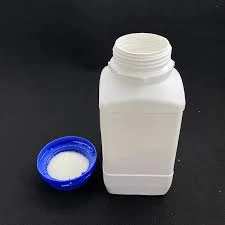Ornithine Aspartate A Comprehensive Overview
Ornithine aspartate (OA) is a compound formed from two amino acids ornithine and aspartate. It plays a significant role in the body, particularly in the context of nitrogen metabolism and detoxification processes. This article delves into the biochemical properties of ornithine aspartate, its physiological roles, potential therapeutic applications, and implications in clinical practice.
Biochemical Properties
Ornithine is a non-protein amino acid that serves as an intermediate in the urea cycle, which converts ammonia into urea for excretion through urine. Aspartate, on the other hand, is involved in various metabolic pathways, including the synthesis of other amino acids and nucleotide metabolism. When these two amino acids combine to form ornithine aspartate, they create a compound that can enhance the effectiveness of nitrogen transport and disposal in the body.
Physiological Roles
One of the primary functions of ornithine aspartate is its role in ammonia detoxification, particularly in the liver. In conditions where the liver is compromised, such as cirrhosis or hepatic encephalopathy, ammonia levels can rise dangerously high. Ornithine aspartate promotes the conversion of ammonia into less toxic substances, thereby protecting the brain and other organs from the detrimental effects of high ammonia levels.
Additionally, OA has been shown to stimulate the synthesis of proteins and promote cell growth and regeneration. This feature makes it particularly useful in clinical nutrition, where it is often administered to patients with liver diseases, following surgeries, or for those recovering from severe injuries.
ornithine aspartate

Therapeutic Applications
Several clinical studies have highlighted the potential benefits of ornithine aspartate in various medical conditions. In patients with liver disorders, OA supplementation has been associated with reduced blood ammonia levels and improved liver function tests. It has also been explored as a potential treatment for conditions such as acute liver failure and chronic hepatic encephalopathy.
Furthermore, the role of OA in enhancing athletic performance has garnered attention. Some athletes and bodybuilders use ornithine aspartate as a dietary supplement to aid in recovery and reduce muscle fatigue. However, more research is necessary to establish the efficacy and safety of OA in athletic performance enhancement.
Clinical Implications
While ornithine aspartate holds promise, healthcare professionals must carefully assess its use in clinical settings. It is crucial to monitor patients who are taking OA, particularly those with underlying liver diseases, to ensure that it does not interact negatively with other medications or exacerbate existing conditions.
In summary, ornithine aspartate is a compound with significant physiological roles, particularly in ammonia detoxification and protein synthesis. Its therapeutic potential in liver disease and its application in sports nutrition make it a compound of interest in both clinical and athletic settings. As research continues to elucidate its benefits and mechanisms of action, ornithine aspartate may become an integral part of treatment protocols for various health conditions. Future studies will further clarify its role and effectiveness, helping to optimize its use in different patient populations.

